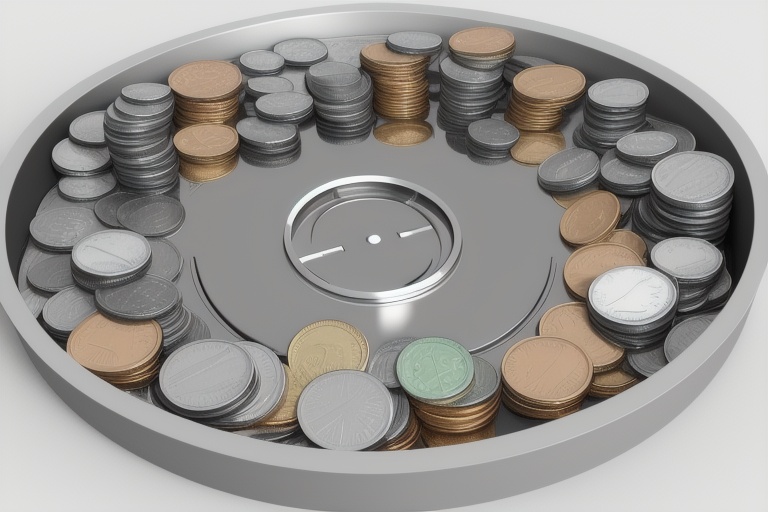Coin collecting, known as numismatics, is more than just a hobby—it's a gateway to the past, a testament to human civilization's journey, and an art form in its own right. The act of collecting coins is a venerated tradition, one that is steeped in history and rich with cultural significance. It is a systematic accumulation and study of coins, tokens, paper money, and objects of similar nature. Interestingly, with the exception of ancient civilizations such as China and Japan, paper money is a relatively recent development, making coin collecting one of the oldest hobbies in the world.
Coin collecting, known as numismatics, is more than just a hobby—it's a gateway to the past, a testament to human civilization's journey, and an art form in its own right. The act of collecting coins is a venerated tradition, one that is steeped in history and rich with cultural significance. It is a systematic accumulation and study of coins, tokens, paper money, and objects of similar nature. Interestingly, with the exception of ancient civilizations such as China and Japan, paper money is a relatively recent development, making coin collecting one of the oldest hobbies in the world.
The hobby is often misunderstood as a modern pastime, but contrary to popular belief, it actually dates back to ancient times. Suetonius, a Roman historian, documented that Emperor Augustus had a penchant for ancient and exotic coins and frequently bestowed them as gifts upon his friends. It further comes to life in the archaeological record, including treasures like a hoard of Roman gold coins found in Vidy, Switzerland, which comprised a distinctive collection of 70 different coins, signifying the collector's intent during Roman rule.
Coins, while representative of monetary value, are also miniature masterpieces, often considered works of art from civilizations long gone. As art collecting thrived during the 4th and 3rd centuries BC, coins became sought-after items among art collectors due to their accessibility and ease of transport. They were not only collected but also used to adorn jewelry and decorative arts of the era, cementing their place in the broader scope of artistic pursuit.
The study and appreciation of coins evolved concurrently with the growing interest in their collection. The 18th century heralded the dawn of numismatic scholarship, which offered deeper insights into the historical significance and the cultural contexts of coins. Numismatists such as James Prinsep, Sir John Evans, Percy Gardner, Johann Jakob Reiske, and Joseph Hilarius Eckhel, to name a few, made momentous contributions that augmented the allure and significance of numismatics.
In today's digital era, coin collecting has burgeoned into a mainstream pursuit, capturing the imagination of individuals across various age groups. The advent of online platforms has provided a communal space for hobbyists to engage, exchange knowledge, and display their treasured collections. As such, the hobby has woven together a vibrant tapestry of enthusiasts and experts.
Moreover, as the value of coins has steadily risen over time, the hobby of coin collecting has unfolded as a potentially lucrative venture. Rare and historically significant coins have become coveted items, often commanding hefty sums in specialized markets and auction houses.
Aside from the potential financial rewards, the intrinsic value of coin collecting lies in the historical narratives each coin carries. The hobby is an adventure through time, offering a profound connection to the different civilizations and cultures that have shaped our world. For those just embarking on this journey or the seasoned numismatist, coin collecting reveals the intricate tales of our shared heritage.
In the forthcoming part of this series, readers can anticipate an exploration of the varied types of coins that captivate collectors, the methodologies employed to appraise their value, and pragmatic guidance on cultivating a distinguished coin collection. Stay tuned as we continue to unveil the diverse and fascinating elements that comprise the enchanting world of coin collecting.
Coin collecting takes us on a timeless sojourn, one that traces its lineage back to the earliest civilizations fascinated by the imageries on their coinage. Initially, these depictions—featuring renowned rulers and mythological figures—ignited a spark for collecting coins.
This practice saw variations across the globe; in Asia and Africa, where coins were typically devoid of such imagery, the impulse for collecting didn't gain momentum until more contemporary times. Contrastingly, during the Renaissance, an exuberant market for ancient coins materialized, dubbing it the "hobby of kings" throughout the 15th and 16th centuries, with European nobility forming its core collector base.
This burgeoning interest in coin collecting gave birth to a unique industry complete with agents tasked with unearthing artifacts fit for sale and, regrettably, also giving rise to forgeries. By the 17th century, coin collecting had matured into a scholarly undertaking, with extensive assemblages being meticulously cataloged and researched. This scholarly ethos led to the publication of seminal numismatic treatises that shaped the discipline.
With the advent of the 18th century and the establishment of institutional collections, numismatics transcended into a full-fledged scientific discipline. The meticulous documentation and publication of these collections and discoveries brought numismatics into a new echelon of recognition, democratizing knowledge that was once the privilege of the few. This democratization allowed individuals beyond the nobility—merchants, professionals, and others from the burgeoning middle class—to partake in coin collecting, thereby cultivating a physical and palpable link to bygone eras and antiquities.
Coins are historical artifacts, and our modern-day collection of coins continues to reflect our enduring fascination with the storied past. The hobby not only survives but thrives, as collectors of all backgrounds engage in the discovery and appreciation of numismatic heritage. Each coin, with its unique configuration of historical, artistic, and monetary significance, is a treasure trove waiting to be explored.
Coin collecting offers a glimpse into the past, an immersive experience that spurs both scholarly pursuit and personal enjoyment. From the seasoned numismatist to the curious beginner, the realm of coin collecting remains an expansive and educational domain, ripe with opportunities for discovery and insight. It's a world where history comes alive in the palm of one's hand, offering stories of civilizations, monumental events, and the evolution of economies. Through the act of collecting, we not only safeguard these narratives but also gain a deeper appreciation for the interconnectedness of our global history.
In the next installment, prepare to delve deeper into the types of coins that strike a chord with collectors, the nuanced approaches to determining their value, and the strategic advice that will help one build an impressive and meaningful collection. The world of coin collecting beckons with its intricate stories and valuable lessons—stories of our collective past waiting to be told by the coins we collect and cherish.
Information for this article was gathered from the following source.

![The Coin Collecting Bible: [5 in 1] The Most Complete and Updated Guide from Beginners to Advanced to Buy and Sell the TOP and Rare Coins of All Time](https://m.media-amazon.com/images/I/61Mo3wwmNeL._AC_UL320_.jpg)


